This simple bean stew (pronounced “fool med-am-es”) is so ubiquitous in much of the Middle East and farther afield that it’s popularly known as “the rich man’s breakfast, shopkeeper’s lunch and pauper’s supper”. Loved from Ethiopia to Iraq, its epicentre is generally acknowledged to be Egypt, where it’s widely considered to be the national dish; some date it back to the times of the pharaohs. Given the difference, and difficulty, in choosing between, say, a Palestinian ful and a Sudanese one, I will confine myself to the Egyptian variety, though even that, of course, is made differently in different parts of the country. Wherever you are, however, it is delicious enough to eat for breakfast, lunch and dinner.
The beans
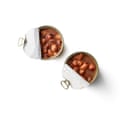
Ful, also spelled foul and fuul, is made with fava beans – which, according to Hodmedods, are “Britain’s original bean”. And while they’re essentially “the same species as the fresh or frozen green broad beans more familiar in British cooking [Vicia faba] … fava beans are the fully mature dried fruit of smaller seeded varieties”. Food writer Clifford A Wright informs readers that “the only fava bean used for making the prepared dish known as fūl is the smaller, rounder one called fūl hammām (or bath fava) by the Egyptians”. Egyptian food writer and author of Cairo Kitchen Suzanne Zeidy, meanwhile, notes the many superstitions attached to these beans and calls them “beans of the dead”. (That said, Anissa Helou’s recipe in her book Feast specifies larger beans, which, according to Jenny Linford’s book Pulse, is the Syrian preference, too, so if you can’t find small ones – and British-grown examples are readily available online – you’ll be in good company.)
Many modern recipes prefer to use tinned beans, which can increasingly be found in larger supermarkets and areas with a significant ful-appreciating population. Max Falkowitz prefaces his recipes for Serious Eats with the caveat that favas are “a royal pain” to cook and the liquid in the tins is “a great addition”. Sami Tamini and Tara Wigley note in Falastin that tinned beans also offer the cook “much more consistency”, as well as being a more practical breakfast option.
I’m relieved to say they’re right; tins of fava from my local greengrocer turn Falkowitz and Zeidy’s recipes from two-day affairs to 10-minute ones, which is helpful at 8am. The only real advantage of cooking beans from scratch here is that you can season them yourself, which might be significant if you’re sensitive to salt. (Egyptian food writer Nermine Mansour adds bicarbonate of soda to the soaking water, though I don’t find this makes a noticeable difference to the end result – though if you’re looking for a slow-cooker recipe, check hers out.)
Wright is the only one to insist on peeling the beans before cooking. Unfortunately, I do not notice this instruction in time for me to order a bag of the split variety from Hodmedods, and instead spend two frustrating hours on the task. Happily, though I can see how it might make a difference with larger fava beans, which tend to have tougher skins, with the smaller ones it seems an unnecessary faff, unless you really have no functioning teeth. According to Egyptian-American food blogger Amira, “traditionally, ful medammes dishes are enjoyed skin on, [and] you are welcome to peel the beans, but peeling is not for me, not only for the authenticity of the recipe but time wise, too.” I’m with Amira.
The seasoning
The plainest recipe, from Claudia Roden’s New Book of Middle Eastern Food, cooks the beans in unsalted water, leaving diners to dress their own ful at the table, but most add other flavourings to the pan. As Mansour observes, “generally, it is spiced up with cumin, coriander, salt, pepper and lemon, yet each Egyptian household keeps its secret tahwiga, or spice blend, for its signature foul medames dish.”
Both she and Wright simmer the soaked beans with chopped onion and tomato, and, in Roden’s case, garlic, lemon and turmeric, too – plus cumin, coriander, za’atar, sumac, thyme, ginger, cayenne pepper and garlic salt once they’re cooked, which just goes to prove that this dish can be as simple or as complex as the cook desires. Even those using tinned beans reheat them with some sort of aromatics: crushed garlic and cumin seeds for Falkowitz; and sauteed onion, tomato, garlic, cumin and chilli in Zeidy’s recipe for the spicy fuul typical of the Mediterranean port of Damietta.

The beans have a robust, sweetly earthy flavour of their own that I’d like to preserve, so I’m going to follow Roden’s lead and cook them plain, then stir in the aromatics once they’re done, as Zeidy suggests. I love the sweetness of her fried onion and tomato, and the heat of both the Damietta-inspired chilli and Falkowitz’s crushed garlic and cumin paste, so I’ve gone for all of the above – no doubt making this an unholy mishmash of regional styles for which I can only apologise. Feel free to play around with any of the options to suit: one of the beauties of ful is how adaptable it is once you’ve mastered cooking the beans (or given yourself permission to save time with the tinned sort). That said, absolutely everyone adds lemon juice – well, all except Roden, who leaves the diners to squeeze on their own.
Extras
Mansour and Wright’s recipe includes red lentils, which, according to Wright’s source Haniya, an Egyptian anthropologist, is largely for their colour. Mansour puts in some rice as well, possibly to help thicken the gravy, because, after six hours of cooking, the grains are so soft that they’re barely detectable in the finished dish. Of more consequence is the oil she stirs in (rapeseed or olive), which, like the tahini in Zeidy and Falkowitz’s recipes, gives her ful real richness. You could, of course, just drizzle some on top at the end, but it’s even better incorporated into the sauce.
To mash or not to mash?
Zahra Hankir’s lovely essay on ful for the Roads & Kingdoms website explains that: “In Egypt, the beans are crushed almost entirely, while in Yemen they’re mashed to the extent that the final product resembles a soup. Meanwhile, in the Levant, the beans are left somewhat intact, and are only partially mashed.” Basically, it’s up to you to choose the texture, though I’d definitely advise mashing some of the beans into the cooking liquid to thicken it.
Serving suggestions
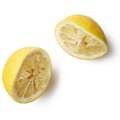
Having kept her beans plain, Roden tops them with parsley and serves them with flatbread, passing round the dressing ingredients “for everyone to help themselves”: a bottle of extra-virgin olive oil, quartered lemons, salt and pepper, and a little saucer each of crushed garlic, chilli flakes and ground cumin. Bread is frequently mentioned as a must-have, while lemons, boiled eggs and spring onions are almost as popular. Zeidy suggests a handful of rocket, Mansour hummus or tahini, pickles, lettuce and Tabasco. Wright pairs the ful with “extra-virgin olive oil, corn oil, melted butter, samna [clarified butter] … basturma [sun-dried, spice-rubbed beef fillet, available in Middle Eastern markets], fried eggs, hard-boiled eggs, freshly squeezed lime juice or bechamel sauce”, or the garlic or tomato sauces he provides recipes for. And that’s before you get to Tamimi’s avocado and red onion, or Yohanis Gebreyesus’ scrambled eggs.
As Wright points out, “ful keeps well in the refrigerator [for] up to a week and is excellent reheated”. Mansour recommends making big batches for the freezer: “Whenever you crave foul medames, just pull a ziplock out of the freezer, defrost, heat the foul in a skillet, and add some water, olive oil and adjust the seasoning.” (Almost) instant comfort.
Perfect ful medames
Prep 10 min, plus soaking time if using dried
Cook 20 min-70 min, depending on the type of bean
Serves 4-6
400g small dried fava beans, or 2 x 400g tins
1 tsp cumin seeds
2-4 garlic cloves, peeled
Salt
2 tbsp extra-virgin olive oil, plus extra to serve
1 large onion, peeled and finely chopped
2 tomatoes, chopped
1 green chilli, finely chopped (optional)
1 lemon
1 small bunch flat-leaf parsley
If using dried beans, soak them overnight in plenty of cold water, then drain. Put in a large pan and add cold water to cover by about 3cm. Put on the lid, bring to a boil, then turn down the heat and simmer gently until soft – depending on the age of the beans, this should take at least an hour. Alternatively, drain the tinned beans into a large pan with about half of their liquid (reserve the rest), then heat up gently.
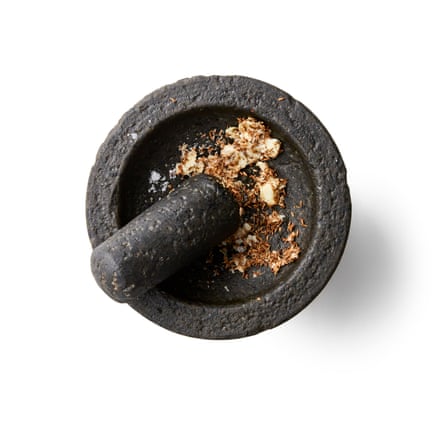
Once the beans are almost ready, toast the cumin seeds in a dry frying pan until aromatic, then tip into a mortar, add the garlic and a pinch of coarse salt, and pound to a paste (alternatively, use a garlic crusher or sharp knife).
Put the oil in the same frying pan on a medium heat, then fry the onion until softened.
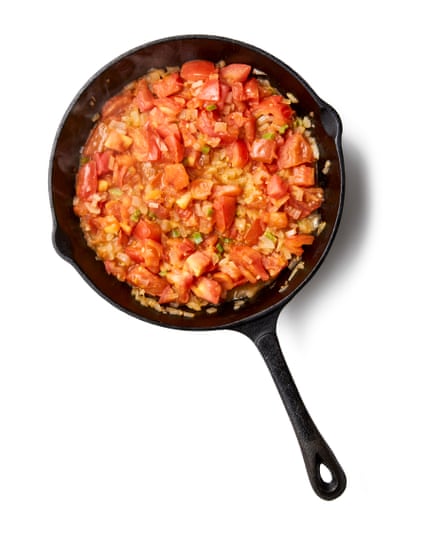
Add the tomato and chilli, if using, and fry for another five or so minutes, until the tomato has broken down.
If there’s still a lot of liquid left in the beans, uncover the pan, turn up the heat and reduce until the mix begins to take on a saucy consistency (conversely, if they’re very dry, add more water).

Mash about a quarter of the beans to help thicken the sauce, then stir in the onions, tomatoes and garlic paste, and cook gently, stirring occasionally, for about 10 minutes, adding more liquid, especially when using tinned beans, if the mix looks too dry. Add a squeeze of lemon juice and season to taste.
Serve sprinkled with chopped flat-leaf parsley and more extra-virgin olive oil, with warm flatbreads, lemon wedges, salad, pickles and so on on the side as desired.
Ful, foul, fuul – however you spell it, are you a fan? If so, how do you make yours, and what do you serve with it? And which other bean-based staples would you recommend for those trying to increase their intake?
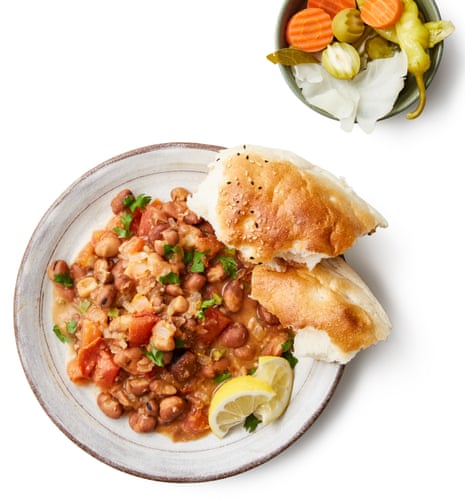
Comments (…)
Sign in or create your Guardian account to join the discussion